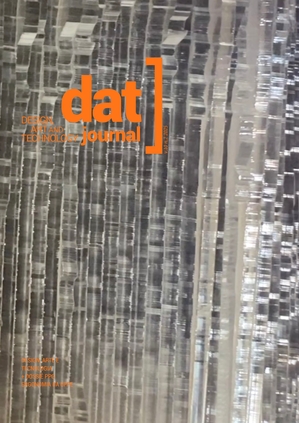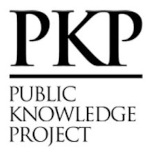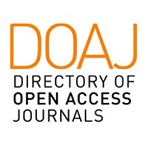O uso da Inteligência Artificial aliada ao Design Centrado no Humano para intervenções tecnológicas na área de saúde mental
uma revisão sistemática
DOI:
https://doi.org/10.29147/datjournal.v10i2.884Palavras-chave:
Design Centrado no Humano, Inteligência Artificial, Saúde Mental, Revisão SistemáticaResumo
Uma em cada oito pessoas apresenta algum tipo de transtorno mental (WHO, 2022). Os problemas oriundos de uma saúde mental instável, leva a diversos prejuízos na vida, desde paralização profissional, dificuldades nas relações sociais e até o suicídio, e este artigo busca investigar a aplicação da Inteligência Artificial (IA) em ferramentas tecnológicas de suporte psicológico, de prevenção ao transtorno mental ou identificação de transtornos no âmbito de discursão do Design Centrado no Humano e suas implicações futuras junto à IA. Como método utilizado para essa investigação, optou-se por Revisão Sistemática, nos quais na filtragem aplicada foram levantados inicialmente 390 trabalhos, e selecionados ao final 15 artigos. Como resultados, observou-se que a IA foi implementada para prevenção e detecção de sintomas de transtorno mental e direcionamento de tratamento personalizável, além de monitoramento, e do uso de ferramentas como ChatBots e métodos de avaliação de estado de saúde mental usados para diagnóstico.
Downloads
Referências
ABNT. NBR ISO 9241-210:2024. Rio de Janeiro: ABNT, 2024.
AHMED, Md Sabbir; AHMED, Nova. A Fast and Minimal System to Identify Depression Using Smartphones: Explainable Machine Learning-Based Approach. JMIR Formative Research, v. 7, p. e28848, 10 ago. 2023. DOI: 10.2196/28848. DOI: https://doi.org/10.2196/28848
ALCÂNTARA, Vírnia Ponte; VIEIRA, Camilla Araújo Lopes; ALVES, Samara Vasconcelos. Perspectivas acerca do conceito de saúde mental: análise das produções científicas brasileiras. Ciência & Saúde Coletiva, v. 27, p. 351-361, 2022. DOI: https://doi.org/10.1590/1413-81232022271.22562019
ANMELLA, Gerard et al. Vickybot, a Chatbot for Anxiety-Depressive Symptoms and Work-Related Burnout in Primary Care and Health Care Professionals: Development, Feasibility, and Potential Effectiveness Studies. Journal of Medical Internet Research, v. 25, p. A63, 2023. DOI: 10.2196/43293. DOI: https://doi.org/10.2196/43293
APA et al. DSM-5: Manual diagnóstico e estatístico de transtornos mentais. Artmed Editora, 2014.
ARWERT, Titia G.; SIZOO, Bram B. Self-reported suicidality in male and female adults with autism spectrum disorders: Rumination and self-esteem. Journal of autism and developmental disorders, v. 50, n. 10, 2020. DOI: https://doi.org/10.1007/s10803-020-04372-z
BERNIK, Márcio; BRAUN, Ivan Mário; CORREGIARI, Fábio. Temas em psiquiatria. Laboratório de Neurociências. 2016. Disponível em: http://neurociencias.org.br/temas-em-psiquiatria/. Acesso em 19 de jan. de 2025.
BHATTACHARJEE, Ananya et al. Understanding the role of large language models in personalizing and scaffolding strategies to combat academic procrastination. In: Proceedings of the 2024 CHI Conference on Human Factors in Computing Systems. 2024. p. 1-18. DOI: https://doi.org/10.1145/3613904.3642081
BURZAGLI, Laura et al. Intelligent environments for all: a path towards technology-enhanced human well-being. Universal access in the information society, p. 1-20, 2022.
BUSCHMEYER, Katharina; HATFIELD, Sarah; ZENNER, Julie. Psychological assessment of AI-based decision support systems: tool development and expected benefits. Frontiers in Artificial Intelligence, v. 6, p. 1249322, 2023. DOI: https://doi.org/10.3389/frai.2023.1249322
CASSIDY, Sarah et al. Risk markers for suicidality in autistic adults. Molecular autism, v. 9, 2018. DOI: https://doi.org/10.1186/s13229-018-0226-4
CASTILLO, Ana Regina GL et al. Transtornos de ansiedade. Brazilian Journal of Psychiatry, v. 22, p. 20-23, 2000. DOI: https://doi.org/10.1590/S1516-44462000000600006
CHOU, Ya-Hsin et al. User-friendly Chatbot to mitigate the psychological stress of older adults during the COVID-19 pandemic: Development and usability study. JMIR Formative Research, v. 8, p. e49462, 2024. DOI: https://doi.org/10.2196/49462
COSTA, Andreia et al. Suicidality in adults with autism spectrum disorder: the role of depressive symptomatology, alexithymia, and antidepressants. Journal of autism and developmental disorders, v. 50, n. 10, 2020. DOI: https://doi.org/10.1007/s10803-020-04433-3
COULTON, Paul; LINDLEY, Joseph Galen. More-than human centred design: Considering other things. The Design Journal, v. 22, n. 4, 2019. DOI: https://doi.org/10.1080/14606925.2019.1614320
DOMICÍLIOS, TIC. Acesso às tecnologias de informação e comunicação no domicílio. 2024.
DUNKER, Christian. Uma biografia da depressão. Planeta Estratégia, 2021.
FERRÉ-BERGADÀ, Maria et al. A method to determine a personalized set of online exercises for improving the positive mental health of a caregiver of a chronically ill patient. BMC Medical Informatics and Decision Making, v. 21, p. 1-13, 2021. DOI: https://doi.org/10.1186/s12911-021-01445-6
GALA, Ana Sofia. Tecnologias assistivas: o que são e exemplos. 2023. Hand Talk. Disponível em: https://www.handtalk.me/br/blog/tecnologias-assistivas/. Acesso: 20 de novembro de 2023.
GARIBAY, Ozlem Ozmen et al. Six human-centered artificial intelligence grand challenges. International Journal of Human–Computer Interaction, v. 39, n. 3, 2023. DOI: https://doi.org/10.1080/10447318.2022.2153320
GIACOMIN, Joseph. What is human centred design?. The design journal, v. 17, n. 4, 2014. DOI: https://doi.org/10.2752/175630614X14056185480186
HALLAL, Pedro Curi et al. Covitel: aspectos metodológicos. Cadernos de Saúde Pública, v. 39, 2023. DOI: https://doi.org/10.1590/0102-311xpt248922
HAROZ, Emily E. et al. Designing a clinical decision support tool that leverages machine learning for suicide risk prediction: development study in partnership with Native American care providers. JMIR public health and surveillance, v. 7, n. 9, p. e24377, 2021. DOI: https://doi.org/10.2196/24377
HERRERA-ALCÁNTARA, C. M. et al. Robotic-Based Well-Being Monitoring and Coaching System for the Elderly in Their Daily Activities. Sensors, v. 21, n. 20, p. 6865, 2021. DOI: 10.3390/s21206865. DOI: https://doi.org/10.3390/s21206865
HOFVANDER, Björn et al. Psychiatric and psychosocial problems in adults with normal-intelligence autism spectrum disorders. BMC psychiatry, v. 9, 2009. DOI: https://doi.org/10.1186/1471-244X-9-35
HUANG, Xilu et al. Experience of using a smartphone WeChat applet for dental anxiety assessment and preoperative evaluation: a nationwide multicenter study. Frontiers in public health, v. 10, p. 900899, 2022. DOI: https://doi.org/10.3389/fpubh.2022.900899
LAMO, Yngve et al. Towards adaptive technology in routine mental health care. Digit Health, v. 8, p. 20552076221128678, 10 nov. 2022. DOI: 10.1177/20552076221128678. DOI: https://doi.org/10.1177/20552076221128678
LOPES, Keyla Crystina da Silva Pereira; DOS SANTOS, Walquiria Lene. Transtorno de ansiedade. Revista de Iniciação Científica e Extensão, v. 1, n. 1, 2018.
MATTAR, João. Filosofia da computação e da informação. São Paulo: LCTE Editora, 2009.
MCCARTHY, John et al. What is artificial intelligence. 2007. DOI: https://doi.org/10.1145/1283920.1283926
NORMAN, Don. O design do dia a dia: Edição revista e ampliada. Editora Rocco, 2024.
OLLIER, Joseph et al. Can digital health researchers make a difference during the pandemic? Results of the single-arm, chatbot-led Elena+: Care for COVID-19 interventional study. Frontiers in public health, v. 11, p. 1185702, 2023. DOI: https://doi.org/10.3389/fpubh.2023.1185702
OPAS. Depressão. 2023. Disponível em: https://www.paho.org/pt/topicos/depressao. Acesso: 17 de julho de 2024.
RIDOUT, Brad et al. The Urgent Need for an Evidence-Based Digital Mental Health Practice Model of Care for Youth. JMIR Mental Health, v. 11, p. e48441, 2024. DOI: https://doi.org/10.2196/48441
RUGGIERI, Víctor. Autismo, depresión y riesgo de suicidio. Medicina (Buenos Aires), v. 80, 2020.
SANTOS, Letícia de Fátima Matos. A experiência da ansiedade no início da vida adulta. 2021.
SARTORETTO, Mara Lúcia; BERSCH, Rita. Tecnologias assistivas. 2023. Assistiva - Tecnologia e Educação. Disponível em: https://www.assistiva.com.br/tassistiva.html. Acesso: 20 de julho de 2024.
SCHMIDEK, Helena Cristina Medeiros Vieira et al. Dependência de internet e transtorno de déficit de atenção com hiperatividade (TDAH): revisão integrativa. Jornal Brasileiro de Psiquiatria, v. 67, 2018. DOI: https://doi.org/10.1590/0047-2085000000195
VAN DER MADEN, Willem; LOMAS, Derek; HEKKERT, Paul. A framework for designing AI systems that support community wellbeing. Frontiers in Psychology, v. 13, 3 jan. 2023. DOI: 10.3389/fpsyg.2022.1011883. DOI: https://doi.org/10.3389/fpsyg.2022.1011883
WHO et al. World mental health report: transforming mental health for all. 2022.
WHO. Mental disorders. 2022. Disponível em: https://www.who.int/news-room/fact-sheets/detail/mental-disorders/. Acesso: 17 de julho de 2024.
ZHANG, Lirong et al. An Artificial Intelligence Platform to Stratify the risk of experiencing sleep disturbance in University Students after Analyzing Psychological Health, Lifestyle, and sports: a Multicenter externally validated study. Psychology Research and Behavior Management, p. 1057-1071, 2024. DOI: https://doi.org/10.2147/PRBM.S448698
ZUARDI, Antonio. W. Características básicas do transtorno de ansiedade generalizada. Medicina (Ribeirão Preto, On-line.), 50(Supl.1), 51-55. 2017. Disponível em: http://www.periodicos.usp.br/rmrp/article/view/127538/124632. Acesso em 18 de jan. de 2025. DOI: https://doi.org/10.11606/issn.2176-7262.v50isupl1.p51-55
Downloads
Publicado
Como Citar
Edição
Seção
Licença
Copyright (c) 2025 DAT Journal

Este trabalho está licenciado sob uma licença Creative Commons Attribution 4.0 International License.


























